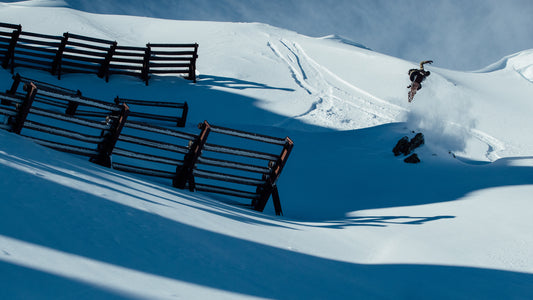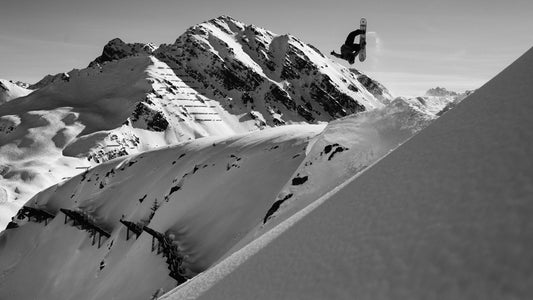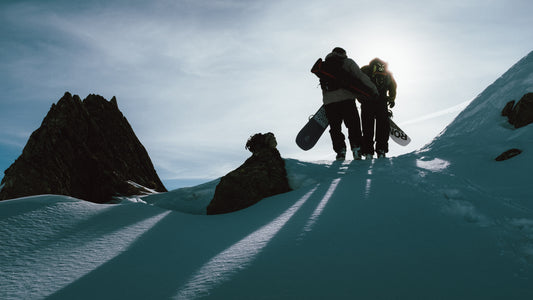The Official Snowboard Size Chart Calculator 2025
How do I know my snowboard size?
Once you’ve chosen a snowboard model, selecting the right size can make a big difference to the fun you’ll have on it. There are a few numbers involved here, but relax – you don't have to be a math genius.
Got your info? Let’s go.

How to Use Our Snowboard Size Chart
Snowboard construction has come a long way in the last few years. By fine-tuning the flex and sidecut, and introducing new materials, it’s become possible to create super fun snowboards that break convention in terms of length and width.
That said, a snowboard sizing chart like the one below provides you with a useful starting point. It’s based on the key variables of weight, height and shoe size and is still appropriate for most models on the market. If a board is meant to be ridden shorter than your standard size then the manufacturer and/or shop staff should clarify this.
Weight is the most important factor, so we recommend using the weight chart first, then cross referencing the result with the height chart. Width comes next; it plays an important part in how stable the board feels, and how quickly it responds from edge to edge (see our deep dive Do I Need a Wide Snowboard?) but it’s even more critical if you have big feet.
Men’s Snowboard Length Chart
|
Rider Weight 95-160 lbs / 43-72 kg 110- 180 lbs / 50-81 kg 150-200 lbs /68-90 kg 160-230 lbs / 72-105 kg |
Snowboard Length 145-150 150-155 155-160 160-165 |
|
Rider Height 5’4”-5’8” ft/in / 162-173 cm 5’6”-5’10” ft/in / 167-177 cm 5’8”-6’2” ft/in / 173-187 cm 6’-6’4” ft/in / 182-195 cm |
Snowboard Length 145-150 150-155 155-160 160-165 |
Men’s Snowboard Width Chart
|
Rider Shoe Size 7-10 US / 6-9 UK / 39-43 EU 9-11 US / 8-10 UK / 42-44,5 EU 10,5-14 US / 9,5-13 UK / 44-48,5 EU |
Snowboard Width 24,8-25,4 25,4-26,1 26,1-27,4 |
Women’s Snowboard Length Chart
|
Rider Weight 75-114 lbs / 35-52 kg 100- 143 lbs / 45-65 kg 120-175 lbs /55-80 kg |
Snowboard Length 135-142 142-147 147-153 |
|
Rider Height 4’11”-5’5” ft/in / 150-165 cm 5’1”-5’7” ft/in / 155-170 cm 5’3”-5’10” ft/in / 160-180 cm |
Snowboard Length 135-142 142-147 147-153 |
Women’s Snowboard Width Chart
|
Rider Shoe Size 5-9 US / 2,5-6,5 UK / 35-40 EU 8-11 US / 6-8,5 UK / 39-42,5 EU |
Snowboard Width 23,9-24,4 24,4-25,1 |
As you can see, our charts spit out a range of sizes rather than one absolute number. The truth is that there’s no such thing as the perfect length for every rider of the same weight/height. Once you’ve got a ballpark figure, your final decision needs to account for riding style, ability and fitness.
With that in mind, let’s have a look at whether you’re better off going towards the longer or shorter end of the scale.
Snowboard Sizing Guide: Benefits of Length and Width
Choosing the right snowboard size is key to unlocking your full potential on the slopes. Whether you’re carving, hitting the park, or exploring powder-filled backcountry, the length and width of your board play a significant role in your performance. Here’s a breakdown of the benefits and trade-offs of different snowboard sizes, with easy-to-digest points and snowboarding-specific terms.
Benefits of a Longer Snowboard
Longer snowboards are ideal for riders who value stability, speed, and control in demanding conditions. If you’re tackling groomers, powder, or steep backcountry terrain, a longer board could be your best companion.
- Increased Stability at High Speeds: Longer boards minimize chatter and keep you stable while bombing down runs.
- Better Powder Float: More surface area allows the board to glide effortlessly over deep snow.
- Improved Edge Hold: The extended running length provides better grip on hard-packed snow and icy slopes, perfect for aggressive carving.
- Enhanced Landings: A longer nose and tail reduce the risk of “sketching out” during heavy landings.
Downsides:
- Heavier and harder to maneuver, especially for beginners.
- Requires more effort to initiate turns.
- Less agile for spins and freestyle tricks.
Benefits of a Shorter Snowboard
Shorter boards are a go-to for riders focusing on freestyle tricks, park laps, and playful riding. They’re built for agility and creativity.
- Easier Turns: Shorter boards are highly maneuverable, perfect for quick edge transitions and technical tricks.
- Effortless Butters and Presses: With less nose and tail, you can easily flex the board for playful movements.
- Lightweight and Energetic: Ideal for hitting rails, throwing spins, and hiking the park.
- Freestyle-Friendly: Most park and jib snowboards are shorter to suit the needs of freestyle enthusiasts.
Downsides:
- Less stable at high speeds, making them more prone to chatter.
- Reduced edge hold on icy or hard-packed terrain.
- Less float in deep powder.
Benefits of a Wider Snowboard
Wider snowboards are gaining popularity, offering enhanced performance across powder, carving, and freestyle riding.
- Increased Powder Float: A wider board distributes weight more evenly, keeping you on top of deep snow.
- More Power on Edge: Wider boards provide better stability and control during deep carves.
- Stable Freestyle Platform: The extra width gives a sturdy base for launching and landing tricks.
- Reduced Toe and Heel Drag: A wider waist width accommodates bigger boots, preventing drag when carving.
Downsides:
- Slightly heavier than standard-width boards.
- Less nimble for quick edge transitions.
How to Choose Your Snowboard Size?
When deciding on the right length and width:
- Consider Your Riding Style: Speed and stability for all-mountain? Agility and tricks for the park? Powder float for backcountry?
- Match to Your Body Type: Taller or heavier riders often benefit from longer or wider boards for better support.
- Think About Your Snowboarding Terrain: Powder and carving call for longer boards, while park riding favors shorter options.
Finding the perfect snowboard size is all about aligning your goals and riding style with the right specs. Whether you opt for a longer, shorter, or wider board, the key is to maximize your fun and confidence on the mountain!



